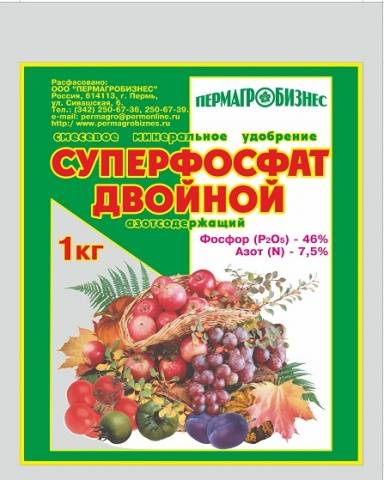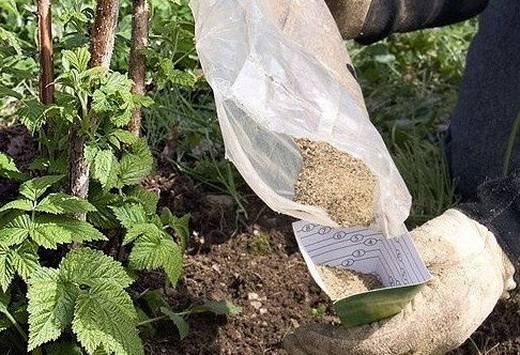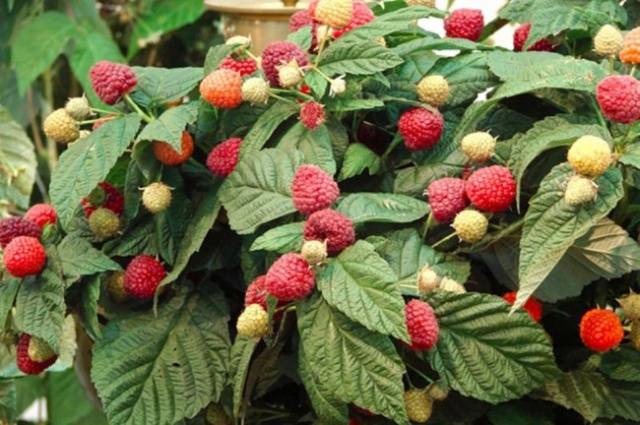Content
Almost all gardeners grow raspberries. But not always get rich harvests of tasty, aromatic berries. The plant is very sensitive to soil fertility, but as raspberries grow in one place for several years, the soil is depleted.
Novice gardeners are especially worried about how feeding raspberries and in what time frame. The article will discuss different types of fertilizers, rules and application rates at different periods of vegetative development.
Fertilizers
There are many fertilizers that raspberries love. They contain different substances and trace elements, therefore, the effect on the plant will be different. The main purpose of using fertilizers is to saturate the soil with nutrients and increase its productivity.
Top dressing is mineral and organic, there are also folk recipes. Most often, gardeners from a wide range of mineral fertilizers use:
- phosphorus-containing;
- nitrogen-containing;
- micronutrient fertilizers;
- potash;
- complex.
Among organic (organic) fertilizers, preference is given to:
- bird droppings;
- siderates;
- manure;
- slurry;
- wood ash;
- compost;
- bone meal;
- straw.
Some gardeners feed raspberries:
- sapropel;
- limestone.
Combined or complex fertilizers for raspberries in their composition have a set of trace elements that are introduced into the soil, simultaneously enriching the soil and nourishing the plants.
These fertilizers are sold in specialized stores. You can purchase ready-made formulations or combine it yourself using different formulations:
- Option one: superphosphate 60 g + potassium salt 40 g + ammonium nitrate 30 g. Such a complex fertilizer is applied dry in the spring before watering.
- The second option: manure 1500 g + nitrogen 3 g + potassium 3 g + phosphorus 2 g. This is the norm per square meter.
To help gardeners, a photo depicting fertilizer measurements.
When to fertilize
It is not at all difficult for experienced gardeners to determine by the appearance of raspberries which fertilizers or chemical elements the plant lacks, and which, on the contrary, are in excess. Beginners, of course, lack such skills. We will try to find out, but what you need to pay attention to in order not to be mistaken when choosing the option for feeding raspberries. After all, the main task of the gardener is to grow healthy plants.
So, let's understand the ailments of raspberries, its appearance with deficiencies or excess of trace elements.
| Appearance | What do you need |
|---|---|
| Thinned, weakened shoots with small leaves. | phosphorus |
| The foliage turns yellow, but the veins remain green. | iron |
| Shoots grow too slowly, leaves turn yellow in summer. | magnesium |
| Leaves overgrown in spring do not increase their size. | nitrogen |
| The leaves turned brown, as if burnt around the edges. | potassium |
| The foliage has acquired an unnatural dark green color. Replacement shoots grow rapidly, indefatigably. The yield decreases, the berries fall off before ripening. | excess nitrogen |
As can be seen from the table, the state of the plants must be monitored in order to provide assistance in time, to feed them with the necessary fertilizers. Important! The lack of micronutrients, as well as their excess, negatively affect the growth of raspberries and their productivity.
Therefore, the introduction of any dressings should be dosed.
Foliar dressing
So how to fertilize raspberries? As a rule, the plant is root-fed with liquid or dry dressings. But, according to experts, such nutrition is not enough for raspberries.What's the matter? When nutrients are introduced into the soil, plants, due to botanical features, do not have time to assimilate them immediately. There are many reasons, but most often unfavorable conditions in the form of heavy rains, washout and weathering interfere with the absorption of trace elements.
Gardeners with extensive experience in growing raspberries are advised to carry out foliar dressing, especially during the fruiting period. After all, plants are able to assimilate nutrients not only by roots, but also by leaf blades.
What kind of feeding is this, what is its peculiarity? For this procedure, dissolve the fertilizer, pour it into a spray bottle and spray the raspberries from top to bottom. It is not recommended to exceed the dosage. For foliar feeding of raspberry bushes, you can use one of the following substances, diluted in 10 liters of water:
- superphosphate - 250 g;
- copper sulfate - from 3 to 5 g;
- boric acid - from 10 to 15 g.
Some gardeners insist wood ash and spray the plantings with the resulting solution. Foliar dressing not only saturates raspberries with nutrients, but also saves from some pests.
There are ready-made formulations for foliar feeding of raspberries. One of them is Kristalon special. It contains trace elements necessary for the growth and development of the plant. Dilute strictly according to the instructions: 30 grams of the product in a ten-liter bucket.
Half a month before the first harvest of raspberries, you can carry out foliar feeding with such a preparation as Kristalon brown. Norm: for 10 liters of water 20 grams.
Kristalon is used in the absence of wind and rain. During work, care must be taken to protect exposed parts of the body.
Features of spring feeding
Spring feeding falls at the end of April, the first days of May. After the raspberries have been opened after wintering, pruning and weeding are carried out weeds, surface loosening of the soil. Then you can start feeding. There are a lot of feeding methods, we will figure out how to fertilize raspberries, what are the best means to use?
Organic
- Slurry. Add 0.5 kg of manure to a ten-liter bucket of water. Mix thoroughly and pour under the plants. At least 5 liters per square meter of the garden.
- Dry humus is also suitable. Distribute up to 6 kg per square, sprinkle with soil on top.
- Chicken droppings. An infusion is prepared 2 weeks before feeding. The solution is prepared as follows: 1 part of the infusion + 20 parts of water.
- Raspberry responds well to wood ash. It can be applied both dry and in the form of an infusion. Wood ash not only nourishes plants with potassium, but also reduces the acidity of the soil.
Mineral fertilizers
- From mineral fertilizers in the spring, you need to use ammonium sulfate, adding 15 grams per square.
- You need to be careful with nitrogen fertilizers: no more than 15 grams per square. Otherwise, the rapid growth of greenery will begin. Urea also contains nitrogen and is, according to gardeners, the best option for spring feeding raspberries. The fertilizer is scattered under the bushes, one tablespoon is enough per square meter. Some gardeners sprinkle urea in a strip along the bed before the snow melts. Top dressing of raspberries ends with mulching.
- Another use case for urea. For 10 liters of water, add a shovel of fresh manure, urea in a matchbox. The composition is mixed and watered with raspberries under the bush.
- For complex feeding, 1 part of ammonium nitrate and potassium fertilizers and 2 parts of superphosphate are used. A ten-liter watering can of water requires 100 grams of the mixture.
Gardening tips on video:
What raspberries need in summer
Novice gardeners are often interested in how to feed raspberries in the summer.By the beginning of the fruiting period, raspberries have already managed to partially use up the nutrients obtained during spring feeding. In June, she needs a complex fertilizer, which includes nitrogen, potassium and phosphorus. You can use ready-made fertilizers or prepare it yourself. This will require 10 liters of water:
- urea - 40-50 g;
- superphosphate 200-250g;
- potassium sulfate - 60-70 g.
This composition is poured into the roots of raspberries. Fertilizer can be used for foliar feeding. Then boric acid (10-15 g) and magnesium sulfate (150 g) are added to the solution.
Raspberries are fed with exactly the same fertilizer after harvest. If you do not want to reuse mineral fertilizers, pour the ash infusion on the raspberries: 2.5 cups per ten-liter bucket of hot water.
Foliar top dressing with Crystalon will not hurt.
We feed raspberries in the fall
What fertilizers should be applied under raspberries in the fall?
We offer the most popular formulations:
- Mix 300 g of ash and sugar, 300 g of manure, student crayons - 3 pieces. Fold into a barrel, add hay and grass. Top up with water. It takes about two weeks to infuse. For each ten-liter bucket, 0.5 liters of infusion is poured and 3 liters are poured under each plant.
- Superphosphate (50 g) + wood ash (glass) is poured into 10 liters of water. This is a composition for one square.
- 3 g zinc sulfate + 5 g manganese sulfate per ten liter bucket (norm per square).
Foliar feeding of raspberries, for example, with Kristalon, will not hurt.
Folk remedies
Raspberry cultivation in Russia has been practiced for a long time. Our ancestors did not have the opportunity to use ready-made mineral fertilizers for feeding raspberries. They came up with many means, thanks to which raspberries gave a rich harvest.
Here are several options for folk dressing:
- Take equal amounts of nettles and comfrey. Add 10 liters of water. Insist in the sun for two weeks. Pour 1 liter of infusion into the watering can and fill the bucket to the brim. Two liters is enough for one raspberry bush.
- Add manure (3 kg), ash (1 glass), nettle (1 kg) to the container. Pour 20 liters of water. Leave in the sun for 7 days. When diluting, a ratio of 1:10 is adhered to. Half a liter of fertilizer is enough for one raspberry bush.
Let's summarize
Raspberries love to grow in fertile soil. With a lack of nutrition, the plant begins to suffer, which negatively affects the yield and taste of the berries. The choice of fertilizer depends on the grower. The main thing is to adhere to the rationing, to feed the raspberries in a timely manner. Good luck gardeners.















